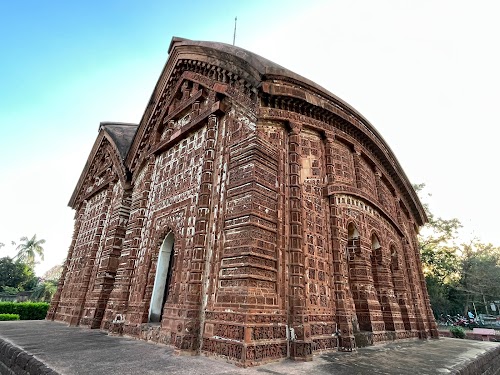
Jorbangla Temple
Bishnupur, India
- Admire the terracotta artwork.
- Explore the surrounding temple complex.
- Learn about Malla dynasty history.
- Observe the unique 'dochala' architecture.
- Photography of the temple structure.
Known for:
Description:
The Jorbangla Temple, also known as Keshta Rai Temple, is a prominent terracotta temple in Bishnupur, West Bengal, India. It's a stunning example of the unique 'dochala' style of Bengal temple architecture, resembling two traditional village huts joined together. The intricate terracotta panels adorning the temple walls depict scenes from the Ramayana, Mahabharata, and various aspects of daily life, showcasing the rich artistic heritage of the region. The temple's unique design and exquisite craftsmanship make it a must-visit for architecture enthusiasts and history buffs alike. Its relatively small size allows for an intimate viewing experience, letting visitors fully appreciate the artistry and detail of the terracotta work. The temple stands as a testament to the Malla dynasty's patronage of art and culture.
History:
Built in 1655 AD by Raghunath Singha Dev II of the Malla dynasty, the Jorbangla Temple is dedicated to Lord Krishna. The Malla rulers, known for their Vaishnavite leanings, were great patrons of art and architecture, and this temple is a prime example of their contribution. The 'dochala' style, though simple in concept, was ingeniously used to create a visually striking structure. The terracotta panels were meticulously crafted by local artisans, reflecting the socio-cultural milieu of the time. Over the centuries, the temple has withstood natural calamities and human interventions, standing as a silent witness to the changing times. It remains a significant historical and architectural landmark, attracting tourists and scholars from across the globe.